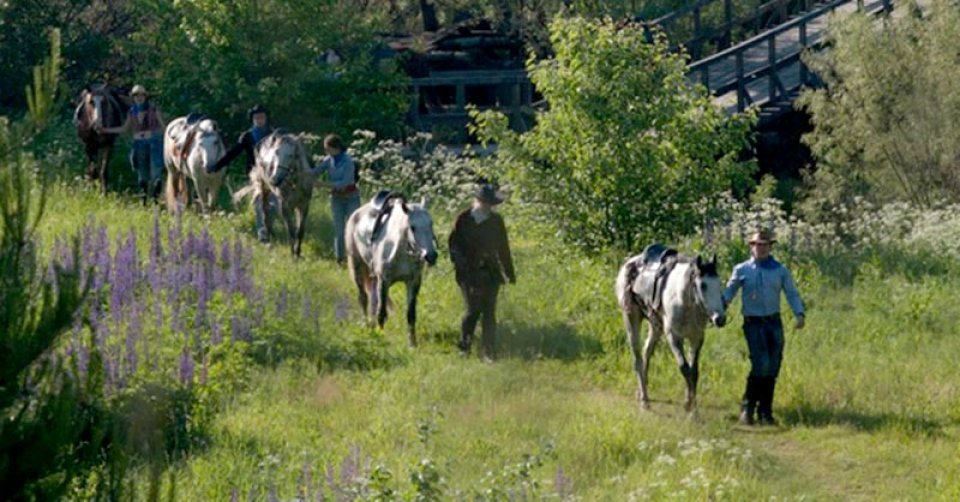
The case study area is 8,512 ha, situated within Staroustinskoe forestry unit in Voskresenskoe forest district. Russian forests are primarily state-owned, the foundation of forest policy, and forest management is transferred to regional governments.
A tenant can only rent a forest plot for a single use, thus profiting and managing the forest plot for one forest product or ecosystem service. To utilize other services on the same plot, the tenant must participate in a new tender on same terms with other potential tenants, potentially leading to more than one tenant on the same plot and subsequently to more frequent conflicts. The current Russian national forest law does not facilitate payments for several forest ecosystem services.
This case study from the SINCERE project had the goal to:
- Develop mechanisms for multi-purpose forest management, introducing the concept of ecosystem services (ES) and multi-purpose forest use into the current forest renting system which currently only provides leases for a single ES.
- Change management priorities from wood harvesting to multi-purpose forest management.
- Increase the economic efficiency of forest use while maintaining a balance between all ES by introducing a multi- purpose lease for a forest plot into the Forest Law.
This case study is drafting new legislation that allows renting forestland for multiple purposes in order to increase economic efficiency and maintain a balance between all ecosystem services.
The case study attempts to change the current legislation, the National Forest Code, to include the concept of ecosystem services and allowing payments for forest ecosystem services (FES). It aims to include multiple use rights in the tender process for leasing a forest plot in the hope that this will establish incentives for forest owners to provide FES, or at least allow for an integrated management for all valuable marketable uses by the leaseholder. It includes proposals to facilitate payment for the services include establishing a market (e.g. carbon credits), and also a tax system as a means to raise funding for, or to otherwise compensate or pay the forest tenant for, supporting the production of FES.
Presentation of the ideas drafted to be implemented in the Forest Code has helped raise awareness about FES and multi-functionality in forest management. The proposed implementation has generally been accepted by most of the stakeholders. It might also prevent possible conflicts between the lessees of conflicting FES (e.g. wood harvesting and recreation on the same area).
This innovation mechanism (IM) supports the enhancement of biodiversity and climate change adaptation measures through sustainable forest use and will potentially have an effect on social welfare.
If the IM succeeds in changing the Forest Code, it has the potential to affect forest ecosystem services (FES) provision by creating incentives for an integrated management where focus is not just on timber production. The IM might stimulate forest tenants to preserve and increase the production of multiple FES, e.g. recreational services where forest visitors will enjoy the use values, but also biodiversity and carbon sequestration where the public under certain conditions might benefit from the non-use values. All of this will require that changes in legislation are accompanied by instruments that create the right incentives.
National geographical upscaling: The innovative mechanism (IM) aims to alter national legislation regulating forestry management in Russia and national upscaling is thus implied.
Upscaling to other schemes: If the principles of the Russian legislation allowing different users to hold use-rights to different forest uses on the same piece of land is duplicated in other resource use laws in Russia, then the principles pursued here may also be considered in these other domains.
Upscaling in scope: The IM represents an upscaling in scope for the individual user and leaser, as they would in principle be able to focus on the full scope of forest ecosystem services (FES) in the management of the leased forest. This expansion of scope will need the support of auxiliary instruments enabling payment for ecosystem services for which the leaseholder cannot obtain compensation in the market.
Upscaling to other countries: The general mechanism in this innovation mechanism, a change in the current legislation, is conceptually related to the Basque case study, though the actual changes differ according to context. Similarly, upscaling potential to other countries will depend entirely on differences in the national legislations and how use and ownerships rights are defined on both private and state-owned forests. Most EU countries have legislation that is quite different from the Russian case, which limits the relevance.
